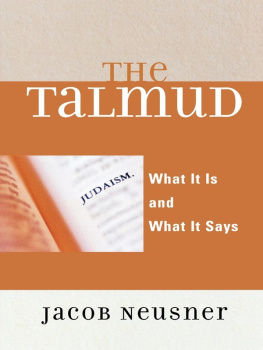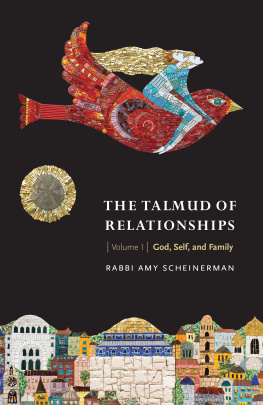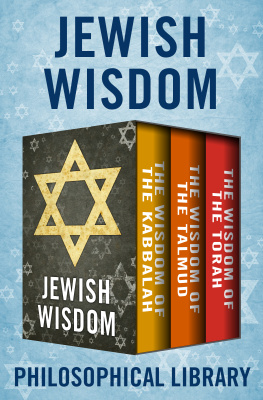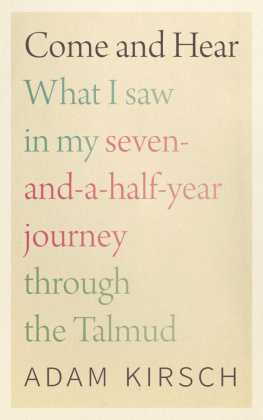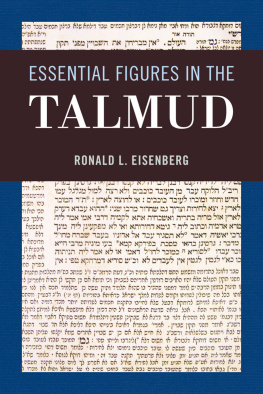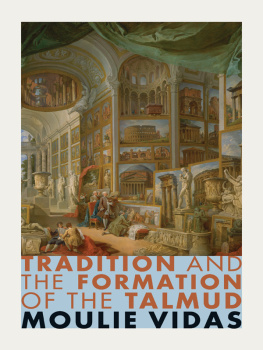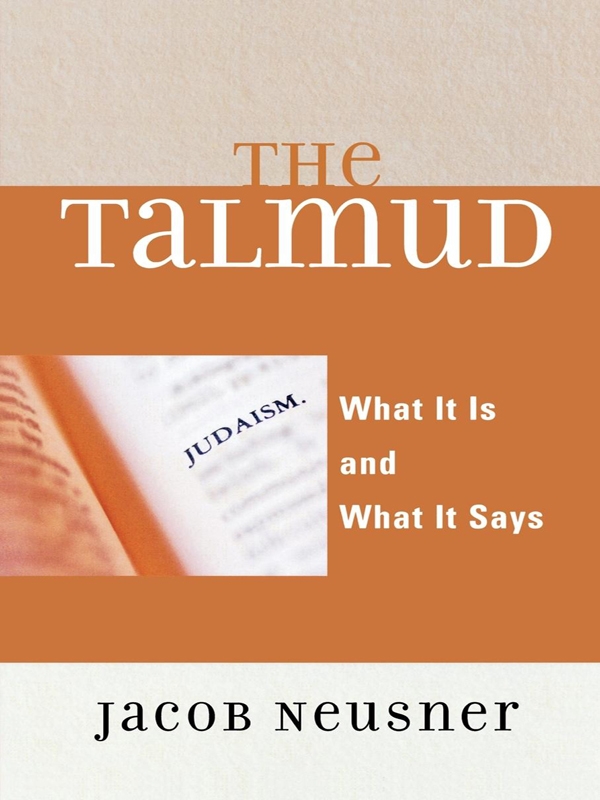Who Speaks through the Talmud?
The Rabbia holy man sanctified by his knowledge of the Torah that God gave to Moses at Sinaispeaks through the Talmud. He is not a prophet, not a priest, and not a king, but he is defined as a unique authority by his capacity to interpret and apply the Torah. That capacity comes about because the Rabbinic sage has mastered the oral traditions handed on from master to disciple from Sinai to the present hour. The Talmud records those traditions.
The particular religious system, the Judaism that the Talmud sets forth, is called Rabbinic Judaismfor the title Rabbi , meaning my lord, of its authoritiesor Talmudic Judaismfor the name of the principal document of that Judaism. It is referred to as formative Judaism, because the particular Judaic system of the Rabbis took shape in the first six centuries of the Common Era, generally called late antiquity. In the setting of theology of Judaism it is called, especially, normative Judaism, the Judaism that sets the norms of right and wrong, that is, for the status as authoritative that in medieval and modern times was attained by the Talmud and those that were and today are its masters.
But most accurately it is called the Judaism of the dual Torah, referring to the narrative critical to Rabbinic Judaism. The story tells that at Sinai God revealed to Moses Torah or instruction in two media. One medium is the written Torah preserved in the Five Books of Moses, and the other is the oral Torah, a memorized tradition handed on in a chain of tradition. Each name for this Judaism serves in its contexthistorical, theological, literary, and religiousbut the Judaism of the dual Torah comes closest to what is absolutely unique to the Talmud in the context of Judaism, that is, the doctrine of an oral tradition possessed and handed on by the Rabbinic sages. They qualified for authority through learning in the Torah and in the oral traditions that give the Torah shape and proportion and structure. But that formal matter does not tell us what the Rabbi actually did or why his principal legacy, the Talmud, proved definitive.
Perspective through comparison with other types of Israelite leaders helps place the Talmud in Israelite context. With roots deep in Scriptures Wisdom tradition represented by Proverbs, Job, and Ecclesiastes (Hebrew title: Qoheleth) going back to an age well before the first century of the Common Era, the Rabbi represents a new kind of authority in the community of Judaism. Scripture put forth authorities who were prophets, like Moses, or priests in charge of service to God, like Aaron, or kings, like David and Solomon. But the Rabbi was not a prophet, not a priest, not a king. A prophet spoke in Gods name the actual words dictated by God and exercised authority deriving from direct encounter with God. He prophesied concerning practical matters but exercised little or no political authority based on coercion and force. Representing Gods stake in holy Israel, the priest qualified by genealogy in the priestly line begun by Aaron administered the divine service in the Temple of Jerusalem. There daily offerings propitiated God and atoned for the sin of all Israel, viewed as a corporate, moral entity. A king managed public policy and exercised secular rule. He had an army and spoke for the ethnic community, Israel as a licit, recognized political entity within the Roman Empire. That arrangement prevailed until the end of the secular monarchy after King Herod (who died in 4 BCE). Later on, as we shall see, secular authority with imperial recognition was exercised by the patriarchin Hebrew, nasi, the ruler of the Jewish ethnic group in the Land of Israel.
How does the Rabbi relate to the patriarch, the political head ofthe Jewish community? It is an ambiguous relationship, involving two kinds of power, military and intellectual. A story recorded in the Talmud of the Land of Israel portrays the Rabbis relationship with the patriarch. The Rabbi was the master of the Torah, and the patriarch held office only with Roman imperial support, including Gothic troops to enforce his will. We can readily understand how armed force trumped intellectual and moral authority. But what we see is that the patriarch paid attention to the teachings of the Torah set forth by the sage.
Here is how matters are portrayed, emphasizing the unique qualification of the Rabbi in Torah learning:

